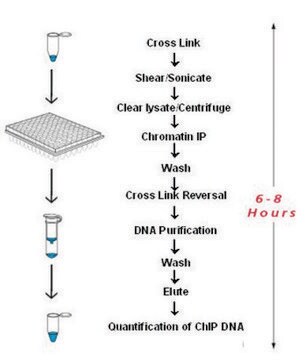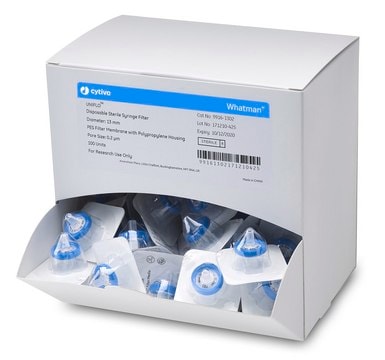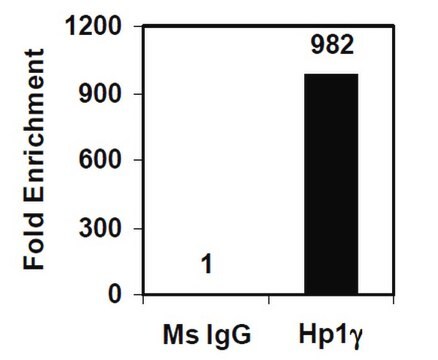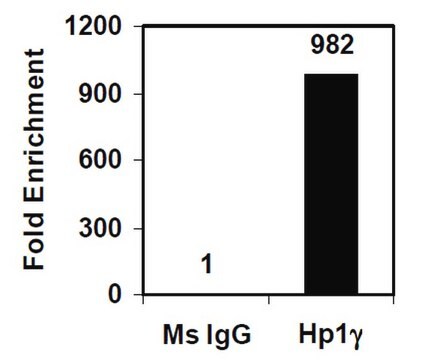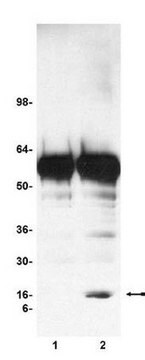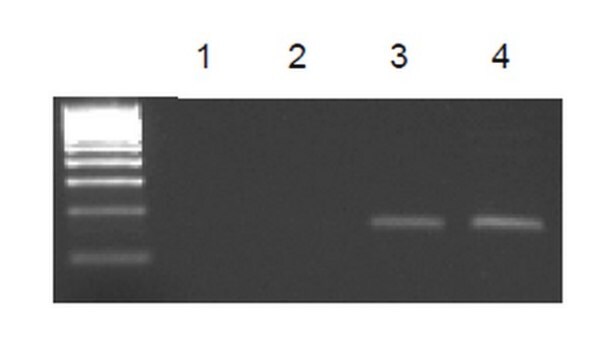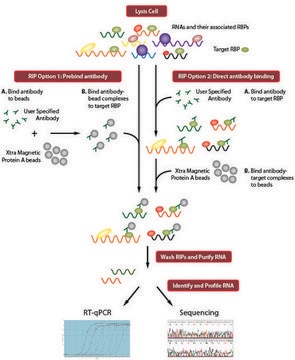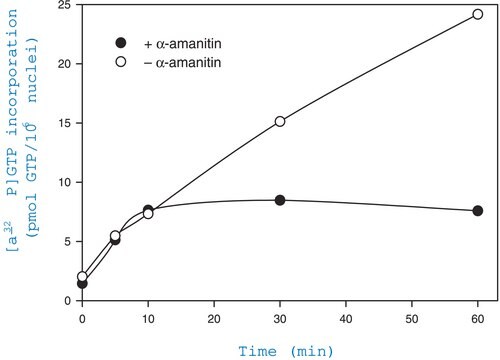Kluczowe dokumenty
CHP2
Imprint® Ultra Chromatin Immunoprecipitation Kit
Complete ChIP kit for sensitivity, compatibility with Next-Gen sequencing
About This Item
Polecane produkty
Opis ogólny
Zastosowanie
- Nadaje się do dalszych zastosowań
- Indywidualna charakterystyka celu do technik profilowania całego genomu
- Charakterystyka szlaków transdukcji sygnału
- Weryfikacja danych ChIp-chIP i ChIP-seq
Cechy i korzyści
- Use successfully CHiP′ed DNA associated with low abundance, medium, and highly expressed transcription factors, as well as histone modifications
- Greater capacity - can be used over a wide range of cell numbers ranging from 2-10 × 106
- Maximum sensitivity - capable of detecting low abundance transcription factors with as little as 2 × 106 cells
- Employs DNA-Blocked "Staph-Seq" for IP (immunoprecipitation), minimizing contaminating Staph A DNA in downstream ChIP-Seq applications.
Informacje prawne
Tylko elementy zestawu
- Sodium dodecyl sulfate solution, for molecular biology, 10% in 18 megohm water
- Monoclonal Anti-POLR2A antibody produced in mouse, clone 1F17, purified immunoglobulin, buffered aqueous solution
Elementy zestawu są też dostępne oddzielnie
- S6576ChIP Next Gen Seq Sepharose™Karta charakterystyki
- I8896IGEPAL® CA-630, for molecular biologyKarta charakterystyki
- S5150Sodium chloride solution, 5 M in H2O, BioReagent, for molecular biology, suitable for cell cultureKarta charakterystyki
- W4502Water, Nuclease-Free Water, for Molecular BiologyKarta charakterystyki
- I5006IgG from rabbit serum, reagent grade, ≥95% (SDS-PAGE), essentially salt-free, lyophilized powderKarta charakterystyki
- I5381IgG from mouse serum, reagent grade, ≥95% (SDS-PAGE), lyophilized powderKarta charakterystyki
- A7638Bovine Serum Albumin, lyophilized powder, essentially globulin free, ≥99% (agarose gel electrophoresis)Karta charakterystyki
- A84564-(2-Aminoethyl)benzenesulfonyl fluoride hydrochloride, ≥97.0% (HPLC)Karta charakterystyki
- D9156Deoxyribonucleic acid, single stranded from salmon testes, For hybridizationKarta charakterystyki
- M7023Anti-Mouse IgG (whole molecule) antibody produced in rabbit, IgG fraction of antiserum, buffered aqueous solutionKarta charakterystyki
- P8340Protease Inhibitor Cocktail, for use with mammalian cell and tissue extracts, DMSO solutionKarta charakterystyki
- R4642Ribonuclease A from bovine pancreas, (Solution of 50% glycerol, 10mM Tris-HCL pH 8.0)Karta charakterystyki
polecane
produkt powiązany
Hasło ostrzegawcze
Danger
Zwroty wskazujące rodzaj zagrożenia
Zwroty wskazujące środki ostrożności
Klasyfikacja zagrożeń
Acute Tox. 4 Oral - Aquatic Acute 1 - Aquatic Chronic 1 - Eye Dam. 1 - Flam. Liq. 3 - Met. Corr. 1 - Ox. Liq. 1 - Resp. Sens. 1 - Skin Corr. 1A - STOT SE 3
Organy docelowe
Central nervous system
Kod klasy składowania
5.1A - Strongly oxidizing hazardous materials
Wybierz jedną z najnowszych wersji:
Certyfikaty analizy (CoA)
It looks like we've run into a problem, but you can still download Certificates of Analysis from our Dokumenty section.
Proszę o kontakt, jeśli potrzebna jest pomoc Obsługa Klienta
Masz już ten produkt?
Dokumenty związane z niedawno zakupionymi produktami zostały zamieszczone w Bibliotece dokumentów.
Klienci oglądali również te produkty
Produkty
Epigenetic modifications are thought to occur through two key interconnected processes—DNA methylation and the covalent modification of histones.
Protokoły
Chromatin Immunoprecipitation qPCR for studying gene regulation across conditions.
Immunoprecypitacja chromatyny qPCR do badania regulacji genów w różnych warunkach.
Nasz zespół naukowców ma doświadczenie we wszystkich obszarach badań, w tym w naukach przyrodniczych, materiałoznawstwie, syntezie chemicznej, chromatografii, analityce i wielu innych dziedzinach.
Skontaktuj się z zespołem ds. pomocy technicznej
